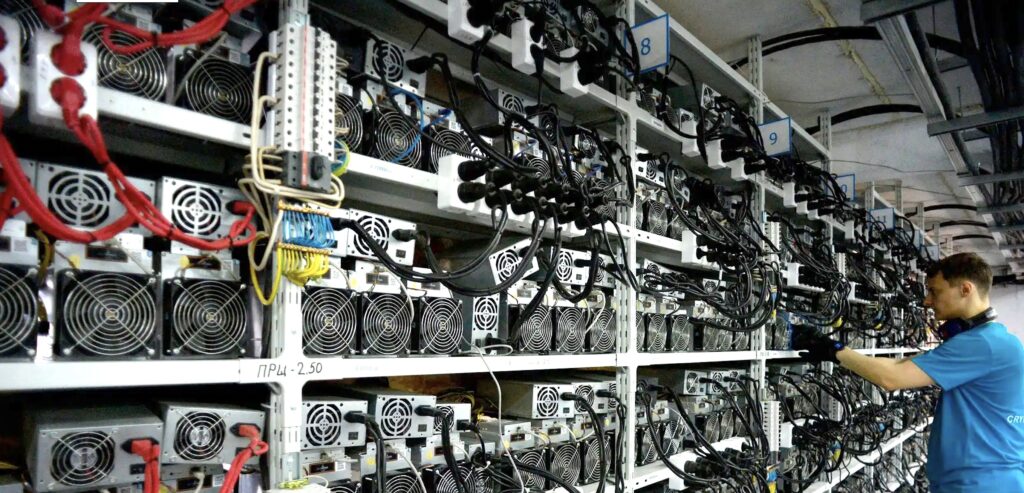What is Bitcoin Mining and How does it work ?
Bitcoin mining is the process by which new Bitcoins are created and transactions are verified and added to the blockchain, which is the public ledger of all Bitcoin transactions. It involves using specialised computer hardware to solve complex mathematical problems.

Here’s a step-by-step explanation of how Bitcoin mining works:
- Understanding the Blockchain: The blockchain is a decentralised ledger that records all Bitcoin transactions. Each block in the blockchain contains a list of transactions, a timestamp, and a reference to the previous block.
- Mining Nodes: Miners are individuals or organisations that participate in the Bitcoin network by running specialised software called mining nodes. These nodes maintain a copy of the entire blockchain and validate transactions.
- Hashing and Proof-of-Work: Miners compete to solve a mathematical puzzle called a “hash function.” This involves taking a set of transaction data and applying a cryptographic hash function to it, which generates a unique output called a hash. Miners need to find a hash that meets certain predefined criteria.
- Difficulty Adjustment: The Bitcoin network adjusts the difficulty of the puzzle every 2016 blocks (approximately every two weeks) to maintain a consistent block creation time of around 10 minutes. If miners collectively find blocks too quickly, the difficulty increases, and if they find them too slowly, the difficulty decreases.
- Block Creation: Once a miner successfully solves the puzzle, they create a new block and include a special transaction called the “coinbase transaction” that awards them a certain number of newly minted Bitcoins (currently 6.25 Bitcoins per block, but this amount decreases over time through a process known as halving). They also include any valid transactions they have verified since the last block.
- Propagation and Consensus: The miner broadcasts the newly created block to the network, and other nodes validate the block and its transactions. If a majority of nodes agree that the block and its transactions are valid, the block is added to the blockchain, and the miner receives the associated block reward and any transaction fees.
- Continuous Mining: The process of mining continues as new transactions are added to the mempool, which is a pool of unconfirmed transactions. Miners select transactions from the mempool and include them in new blocks for validation.
It’s worth noting that Bitcoin mining requires significant computational power and electricity consumption. Miners often join mining pools, where they combine their resources to increase their chances of successfully mining a block and share the rewards proportionally based on their contributions.
Overall, Bitcoin mining plays a crucial role in securing the Bitcoin network, validating transactions, and creating new Bitcoins in a decentralised manner.
